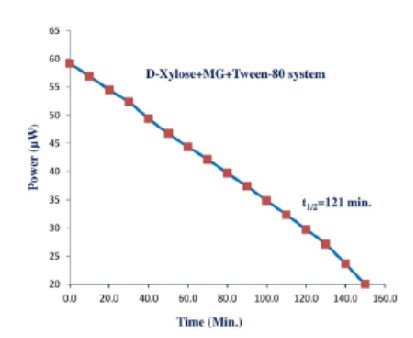


Indian Journal of Science and Technology
Year: 2024, Volume: 17, Issue: 22, Pages: 2263-2270
Original Article
Shantanu Mishra1*, Sushil Kumar Yadav1
1Solar Photochemistry Research Lab, Department of Chemistry, Govt Dungar College, M.G.S. University, Bikaner, Rajasthan, India
*Corresponding Author
Email: [email protected]
Received Date:27 February 2024, Accepted Date:08 May 2024, Published Date:29 May 2024
Objective: A study work plan has been put up for methodical work in the field of solar energy Photogalvanic (PG) cells. It was suggested and required to do experiments with PG cells in sunlight conditions. Improving the conversion of solar energy into electricity and storing it in PG cells is the goal of our study. Method: An H-shaped glass tube with two arms was manufactured using the specially developed PG (Figure 1) cell. Many characteristics of a PG cell with an MG+D-Xylose+Tween-80 system was investigated. Findings: The open circuit voltage, voltage at dark, photopotential (PP), and photocurrent (PC) recorded in this investigation are 1080.00 mV, 165.00 mV, 915.00 mV, and 674.00 µA, respectively. The Fill Factor (FF) and Conversion Efficiency (CE) that were observed 1.891% and 0.2732, respectively. Novelty: Through the adjustment of PG cells' numerous parameters, the effects of solar energy were investigated. Based on the aforementioned results, PG systems have demonstrated through experimentation that they are an effective system and should be further investigated, particularly with regard to improving solar energy output and storage.
Keywords: D-Xylose, Tween - 80, Marigold, Photocurrent, Natural dye
© 2024 Mishra & Yadav. This is an open-access article distributed under the terms of the Creative Commons Attribution License, which permits unrestricted use, distribution, and reproduction in any medium, provided the original author and source are credited. Published By Indian Society for Education and Environment (iSee)
Subscribe now for latest articles and news.